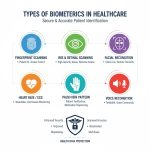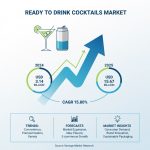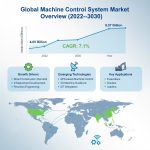Prepared Food Market Size to Surpass USD 282.8 Billion by 2035
The global Prepared Food Market, encompassing ready-to-eat and ready-to-cook meals requiring minimal preparation, is witnessing remarkable expansion. With evolving lifestyles and rising demand for convenience, the market’s growth trajectory is expected to accelerate strongly from 2025 through 2035.
Our comprehensive Prepared Food Market report is ready with the latest trends, growth opportunities, and strategic analysis. View Sample Report PDF.
Key Takeaways
- The Prepared Food Market was valued at USD 186.94 Billion in 2024 and is projected to reach USD 521.53 Billion by 2035, growing at a CAGR of 9.80% (2025–2035).
- Convenience-driven lifestyles, urbanization, and rising disposable incomes are the primary market drivers.
- North America leads the market, while Asia Pacific is the fastest-growing region.
Premium Insights
Prepared foods offer unmatched convenience, appealing particularly to busy professionals and students. Their cost-effectiveness and long shelf life make them attractive year-round. The digital push and marketing efforts have bolstered awareness and consumption. The COVID-19 pandemic further boosted demand, as consumers favored meals requiring minimal prep and fewer shopping trips.
Market Size & Forecast
- 2024: USD 186.74 billion
- 2035: USD 521.53 billion
- CAGR: 9.80% (2025–2035)
The market is characterized by diverse product offerings—frozen, chilled, canned, and shelf-stable—catering to varied preferences. North America leads with robust infrastructure and high consumer adoption. Asia Pacific presents dynamic growth potential as consumer lifestyles modernize and franchises expand. Digital channels and heated meal solutions are transforming distribution and consumption.
For Prepared Food Market Research Report and updates detailed: View Full Report Now!
Product Insights
The prepared food market by product is segmented into frozen meals, chilled meals, canned meals, ready-to-eat snacks, and others. Among these, frozen meals dominate the market owing to their extended shelf life, convenience, and ability to retain nutritional value. Chilled and canned meals are also witnessing strong growth, especially in urban areas, as consumers increasingly prefer quick and safe food options. The rise of clean-label and plant-based frozen products further strengthens this segment’s demand globally.
Meal-Type Insights
Based on meal type, the market is categorized into breakfast, lunch, dinner, and snacks. Dinner and lunch segments hold the largest share due to the high demand for full-course prepared meals that reduce cooking time, particularly among working professionals. Breakfast and snack options are also gaining traction with growing health-conscious consumers who prefer balanced, on-the-go solutions. Ready-to-eat snack boxes and fortified breakfast items are fueling growth in this category, especially in regions with busy urban lifestyles.
Distribution Channel Insights
The distribution channel segment includes supermarkets & hypermarkets, convenience stores, online retail, and others. Supermarkets and hypermarkets dominate due to their wide product availability and strong retail networks. However, online retail is emerging as the fastest-growing channel, driven by the surge in e-commerce platforms and digital grocery delivery services. Consumers are increasingly opting for online purchases due to convenience, broader variety, and attractive offers. This trend has accelerated further with changing consumption patterns post-pandemic.
Regional Insights
North America in Prepared Food Market Trends
North America held approximately 40.9% share of the global prepared food market in 2024. Strong consumer reliance on ready meals—driven by busy lifestyles and high disposable incomes—has supported robust demand. A well-developed retail infrastructure, including supermarkets and convenience store networks, facilitates widespread product availability. Growth is further supported by evolving preferences, including vegetarian and vegan options, and increasing brand promotion and product variety.
Europe in Market Prepared Food Trends
Europe represents a mature prepared food market with growing demand for health-conscious and convenience-oriented meal options. Consumers are showing rising interest in vegetarian and vegan offerings. Retail channels such as supermarkets and convenience stores remain key for distribution. E-commerce is emerging but still secondary. Market growth is driven by urban population density, rising incomes, and increasing reliance on prepared meals among busy working individuals and families.
Asia Pacific in Prepared Food Trends
Asia Pacific is the fastest-growing region in the prepared food market. Rapid urbanization, increasing working populations, and rising disposable incomes are driving demand for ready-to-eat meals. Retail infrastructure is strengthening, and consumer openness to convenience foods is increasing. Cultural shifts, including acceptance of non-traditional meal formats, and expansion of retail and grocery channels are accelerating consumption of prepared foods.
Latin America in Prepared Food Trends
Latin America’s prepared food market is growing steadily as urbanization and shifting work patterns increase demand for convenience meals. Supermarket and hypermarket adoption of prepared food offerings is rising, while online distribution remains nascent. Combined with improving economic conditions and expanding middle-class demographics, companies are expanding product portfolios to meet localized tastes and quick-meal needs.
Middle East & Africa in Prepared Food Trends
In the Middle East & Africa, prepared food consumption is gaining momentum, especially among urban youth and working families. Retail growth in supermarkets and convenience stores is facilitating access. Cultural food preferences and logistical considerations influence category adoption, favoring shelf-stable and canned products. As demand rises, regional customization and expansion of distribution channels are expected to drive future growth.
Key Prepared Food Company Insights
Key Companies:
- Nestle
- General Mills Inc.
- Kellogg Company
- Conagra Brands Inc.
- Tyson Foods Inc.
- Oetker
- Nomad Foods
- Green Mill Foods
- Unilever
- 2 Sisters Food Group
Recent Developments
- The shelf-stable segment is anticipated to grow the fastest within the product category. These meals require no refrigeration and are often considered emergency-ready—this affordability and convenience are driving new product introductions and market growth.
- There’s a significant shift toward plant-based and vegan meals. Consumers increasingly prioritize sustainability and health, prompting manufacturers to produce ready-to-eat products with cleaner labels and environmentally friendly packaging.
- The online food delivery boom is boosting demand for prepared meal kits and frozen options. Driven by convenience, e-commerce platforms now offer breakfast, lunch, and dinner ready-made kits, fueling growth in this channel.
Prepared Food Market Report Scope
According to Vantage Market Research, the report delivers both quantitative and qualitative insights—covering historical data (2021–2023), current market size (2024), and forecasts through 2035. It includes segmentation by Product Type, Meal Type, Distribution Channel, and Region. The scope is customizable, offering a comprehensive view for strategists and stakeholders.
Market Dynamics
Driver:
Demand for prepared and convenience foods is rising sharply, driven by consumer preferences shaped by hectic lifestyles, working professionals, and students. The COVID-19 pandemic reinforced this trend, as people preferred longer-shelf-life meals requiring minimal preparation. Additionally, increasing online grocery penetration and growing disposable incomes—especially in emerging economies—are boosting demand. E-commerce platforms now offer an expanding range of ready-to-eat and semi-prepared kits, further strengthening the prepared food market’s appeal.
Restraint:
Despite growing demand, consumer concerns about processed food safety and ingredient quality present a barrier. Increasing health awareness—especially in developed regions—focuses attention on additives and preservatives commonly used in prepared meals. This scrutiny limits growth unless manufacturers enhance transparency and reformulate products. The aging population, wary of overly processed foods, often prefers fresh or minimally processed options, challenging market expansion.
Opportunity:
A significant opportunity lies in the burgeoning vegan and plant-based segment. With millennials and health-conscious consumers willing to pay a premium for cleaner, ethical options, the vegan prepared meal category is rising fast. This trend encourages manufacturers to innovate product offerings and expand in high-growth channels. Additionally, expanding digital distribution, especially in Asia Pacific, opens untapped markets and allows prepared food brands to reach diverse consumer segments efficiently.
Challenges:
The prepared food market faces operational challenges including maintaining product quality across multiple formats—frozen, chilled, canned, and shelf-stable. Logistics and supply chain complexities escalate with product diversity and regional expansions. Furthermore, ensuring regulatory compliance with labeling and health standards across countries adds complexity. Brands must also stay agile to shifting dietary expectations—like plant-based preferences—while still offering variety and maintaining cost-effectiveness.
Global Prepared Food Market Report Segmentation
- By Product: Frozen; Chilled; Canned; Shelf-stable
- By Meal Type: Vegetarian; Non-vegetarian; Vegan
- By Distribution Channel: Supermarkets & Hypermarkets; Convenience Stores; Online; Others
- By Region: North America; Europe; Asia Pacific; Latin America; Middle East & Africa
Frequently Asked Questions
Q1: What was the global Prepared Food Market size in 2024?
USD 186.74 billion
Q2: What is the projected market size by 2035?
USD 521.53 billion
Q3: What is the CAGR from 2025 to 2035?
9.80%
Q4: How is the market segmented?
By Product, Meal Type, Distribution Channel, and Region (as outlined above)
Q5: Which region leads and which grows fastest?
Largest: North America (40.9% share); Fastest-growing: Asia Pacific
![[Market Research Reports] – Research Google News Blog | VMR.Biz](https://www.vmr.biz/wp-content/uploads/2022/12/logo-removebg-preview.png)











